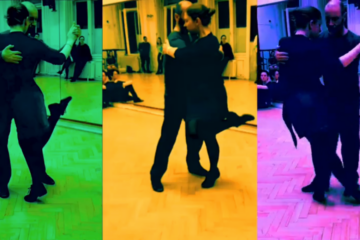How do seafood make their way into tango?! Well, one in particular, the octopus, definitely has its place here, and not just any place 😉 Read on!
Last week in the advanced class, we delved a bit into the world of ganchos and reached the figure named pulpo, or octopus. This is exactly what it looked like..
While it’s not hard to notice the similarity between the movement of legs and an octopus’s tentacles, the connection goes beyond that. The figure is named after its creator, Norberto Esbrez, whose nickname was El Pulpo. Let’s watch a video of him; I don’t think there will be many questions left as to why he got this nickname 🙂
Norberto was born into a tango family; both his father and grandfather were musicians and bandoneon players, making him the third generation. He worked in practically all the significant theaters in Buenos Aires, taught in Brazil for years, and toured worldwide.
His trademark became his fluid, smooth style and, of course, his incredible footwork, which created a seemingly endless whirl of ganchos and sacadas – all aptly captured in his nickname.
The following two videos were made at the same place and time: in the left one, he dances in his usual style with his partner, while in the right one, they played a prank on him by asking him to dance without the characteristic moves (gancho, sacada, enganche).
In addition to the pulpo, or infinite ganchos chained into a cadena, we owe many other figures to Norberto’s boundless imagination and experimental spirit, such as the ocho loco (which we call fake ocho in our classes), the sentada girada, the elevador, and the elástico.
His spontaneous, playful style supposedly originated from dancing tango to rock and roll music, a genre he never parted with.
Norberto Esbrez left the earthly dance floor in 2014 at the painfully young age of 47.


